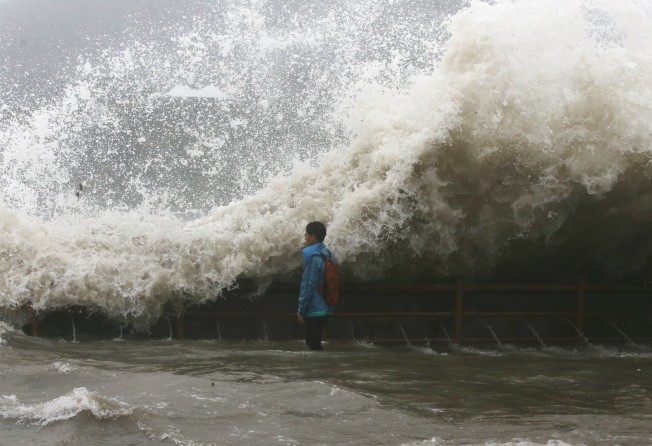
Observatory chief forecasts early typhoon season, hot days for Hong Kong
Five to eight tropical cyclones forecast to enter within 500 kilometres of the city starting in June or earlier, Observatory director says

Hongkongers can expect an earlier than usual typhoon season and above normal temperatures this year, according to the weather forecasters.
Hong Kong Observatory director Shun Chi-ming on Friday said five to eight tropical cyclones entering within 500 kilometres of the city had been forecast for 2018, which he described as normal to above normal. But the onset of the tropical cyclone season could come earlier than usual, starting in June or earlier. In the past, the typhoon season had started as early as April, Shun added.
But he could not say whether a storm as destructive as last year’s Super Typhoon Hato would occur. Hato caused 10 deaths and widespread chaos in nearby casino hub Macau while also bringing business and flights in Hong Kong to a standstill in August.

Shun also expected the annual mean temperature to be above normal, with a medium chance of making the top 10 in the Observatory’s records, which date back to 1885.
“We considered a series of factors including whether La Nina will be established,” he said, referring to the climate pattern of the cooling of surface waters over the central and eastern equatorial Pacific Ocean affecting atmospheric circulation worldwide.
The annual mean temperature last year was 23.9 degrees Celsius, the third warmest on record. The highest was 24.2 degrees in 2015.
But the Observatory’s headquarters in Tsim Sha Tsui also experienced a record-breaking 36.6 degrees on August 22, the day before Hato hit Hong Kong.
“[We can] clearly see the effects of global warming show no signs of easing, so temperatures will be on the high side,” he said.
Temperatures started slightly lower globally this year, but were still on the high side. The annual rainfall is forecast to be between 1,900mm and 2,500mm, which is normal to below normal.
Separately, the Observatory is also studying microclimate stations it designed. With three different designs, the stations can be installed on lamp posts and bollards, to record information such as temperature, humidity, pressure and UV index.
Shun said that the latest technology allowed the weather authority to make smaller sensors at lower cost so they could be deployed more widely in the long term.
Although the stations were still at a demonstration stage, the Observatory had applied for funding to set up a network of around 20 in Yau Tsim Mong district in a three-year programme to study how data would reveal the different weather under different situations.
“This will allow the Observatory and other stakeholders such as universities and town planners to consider how we design our city in the future,” he said.
“In other words, we want to do it smartly so that in the future, we do not [have] small districts with no wind. Under the current climate change and global warming, this will help make our city more liveable and more green.”